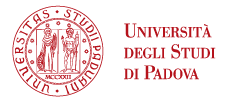Multiscale constitutive modelling of geomaterials
Carmelo Majorana, carmelo.maiorana@unipd.it, tel: 0498275600
Valentina Salomoni, valentina.salomoni@unipd.it, tel: 0498275590
Gianluca Mazzucco, gianluca.mazzucco@unipd.it, tel: 0498275565
Giovanna Xotta, giovanna.xotta@unipd.it, tel: 0498275592
Beatrice Pomaro, beatrice.pomaro@unipd.it, tel: 0498275592
Nico De Marchi, nico.demarchi@dicea.unipd.it, tel: 0498275605
Research areas:
During the years the group worked on many different subjects (from analysing road pavements, to concrete walls to steel blast doors), but the main Research topic is the mathematical-numerical modelling of geomaterials (concretes and soils, essentially) at different scales (macro/meso) and approximations (small/large strains, linear/nonlinear response), together with the analysis of elements and structures subjected to a variety of loads (short/long term; static/dynamic/thermal). The primary objective is the study and the realization of “virtual” structures able to accurately represent the real ones.
Mechanical behavior of cement-base materials at the meso-scale:
Solid models and constitutive laws are developed, distinguishing within the composite material the role of rough aggregates, cement paste and interfacial transition zone (ITZ), with the objective of catching the confinement effect due to inclusions on the surrounding matrix and so realistically reconstructing the complex mechanical material behavior up to failure.
Solid models consistent with the real ones are obtained via appropriate digital techniques such as laser scanner and industrial tomography or, in case an exact aggregate positioning is not necessary, via specific randomization algorithms.
An elastic-plastic-damage constitutive model for the cement paste is developed and implemented, combining a non-associated plasticity law base on 3 invariants with the isotropic scalar damage law; in this way the irreversible processes occurring at failure can be described. The scalar damage model is implemented through a non-local formulation and in agreement with a “weak” coupling with plasticity.
Nuclear radiation and induced heat effects on plain concrete:
A robust numerical model for concretes subjected to prolonged nuclear radiation is defined, considering a visco-elastic-damage material behavior within the hygro-thermo-mechanical formulation at the mesoscale.
A multi-physics multi-scale approach appears fundamental for the following reasons:
i) the aggregates nature drives the composite mechanical response when irradiated;
ii) the shielding properties of the biologic concrete are strictly linked to the water content; the study of humidity evolution, together with thermomechanical aspects, becomes hence of fundamental importance not only for evaluating the concrete structural durability but even its shielding capabilities in time.
Thermo-osmosis phenomena in saturated soils:
A 3D hygro-thermo-mechanical model in finite strains is developed for saturated porous media, with a modified diffusivity law to account for the thermo-osmosis process, i.e. the effect of a thermal gradient on the flux of the fluid phase. The phenomenon is relevant for soils with low hydraulic conductivity, such as clays under high thermal gradients.
Dynamic response of multiphase anisotropic porous media:
Appropriate numerical models are developed to be able to simulate the dynamic response of multiphase porous media subjected to impulsive loads due to impacts or earthquakes. Particularly, the way in which the seismic waves propagate within saturated soils and rocks is analysed, accounting for an anisotropic nonlinear material behavior.
Keywords: numerical modelling, geomaterials, hygro-thermo-mechanical models, mesoscopic approach





